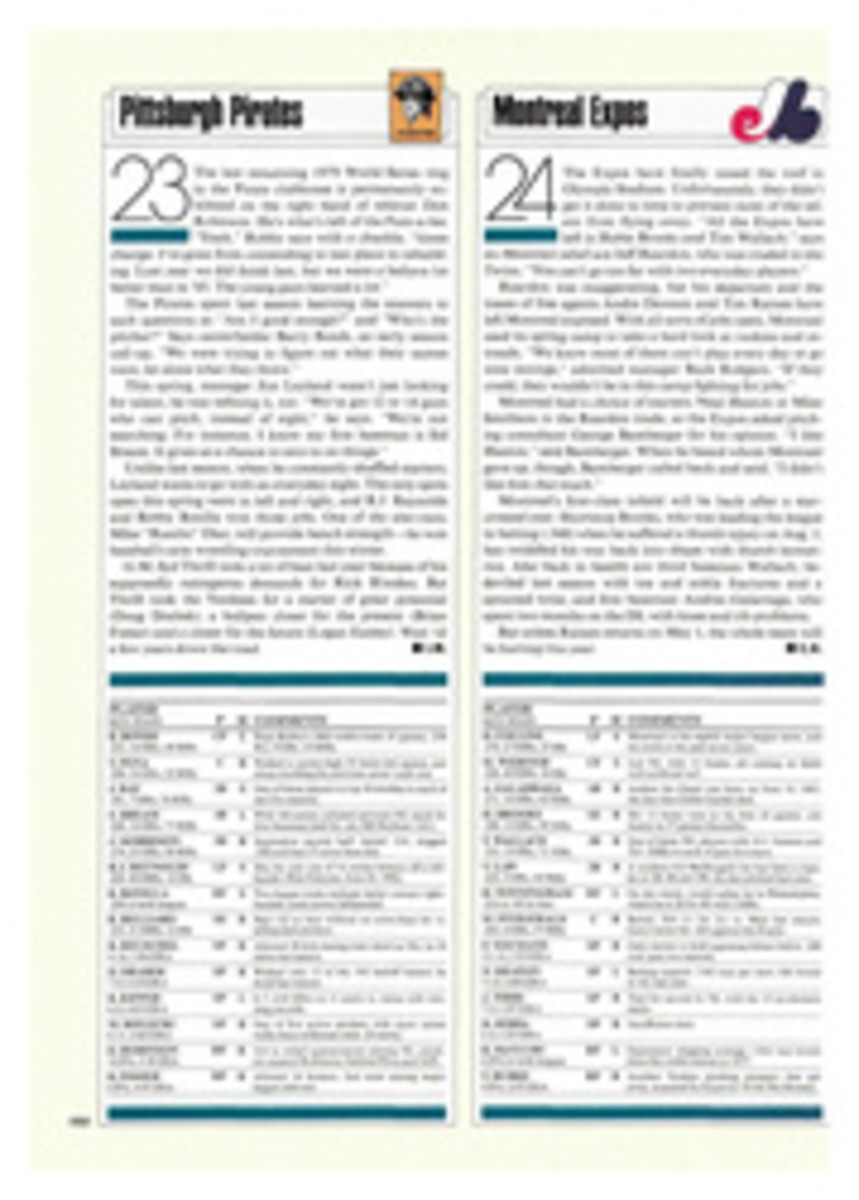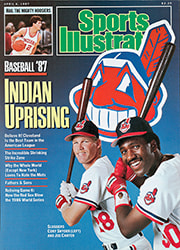
TAMING A TOOTHLESS TIGER
Until the last moment it looked as though the Tournament Players Championship might slide back into the primordial Florida ooze from whence it came, a victim, in recent years, of too much hype and too few heroes. But just in time, Sandy Lyle, 29, a burly Scot with a British Open win on his resumè, and Jeff Sluman, also 29, a bite-sized battler from upstate New York with few credentials but a lot of appeal, emerged from a crowd of would-be winners and turned a sodden Sunday afternoon on a golf course gentled by too much rain and too little wind into a final round to remember.
Before Sunday the only hero the tournament had produced was Fred Klauk, the superintendent, who somehow managed to keep the Tournament Players Club course at Sawgrass playable and in admirable condition despite one torrential downpour after another. Low scores through the first two days of rain delays and suspensions of play were amazing, to be sure, but not the least bit exciting to anyone except the players. At the end of the first round, which, in fact, was not completed until halfway through the second day, 57% of the field had scored even par or better. The cut, at the end of 36 holes, was 143, one under par, the lowest cut in the 14-year history of the tournament.
The fearsome 17th, the par-3 to an island green that is notorious for producing lost balls, was welcoming, nay, embracing, virtually every shot hit to it. Previously unreachable par 5s were producing birdies and eagles with embarrassing frequency. The leaders—Steve Jones after the first round, at 6 under par; Mark O'Meara and Jones after the second, at 11 under; Scott Simpson and O'Meara after the third, at 14 under—seemed to be marching toward victory unopposed by the course that was originally intended to be the toughest test the pros would face all year.
"The wind is not up at all," said Ben Crenshaw. "So the course is kind of defenseless. At certain times you can go ahead and play aggressively. I think that accounts for some of the low scores."
Some, but not all. The Players Club course is a tamed tiger. The TPC moved to the new and controversial layout in 1982. That year Jerry Pate won at eight under par, and then, in a memorable protest, threw the course architect, Pete Dye, and PGA commissioner Deane Beman into the drink off the 18th green. Howls of criticism from the pros about the course followed and, as a result, Beman ordered up numerous changes, especially in the contouring of the greens, that have taken the sting out of the test, and, for the spectators, some of the fun out of the spectacle. "Granted, it's not like it was," says Crenshaw. "A lot of places have been smoothed out, beveled out. There are not as many sharp edges as there used to be."
The bottom line, of course, was that the pros wanted an easier course that would produce the lower scores that best salve the ego. And, unfortunately, the Players Club is now just that.
Bunched behind O'Meara and Simpson at the start of the last round, all within four strokes of the lead, were Lyle, Crenshaw, Sluman, Greg Norman, Paul Azinger and Bill Glasson. Crenshaw, whose 66 on Saturday had tied Lyle for low round of the day, blew himself out with bogeys on the first three holes, and Glasson, a long hitter who was 72nd on the money list last year, slipped back with bogeys at the 3rd, 7th and 12th. But the rest hung on through the afternoon, sorting themselves in and out of multiple ties for the lead. The rain had stopped, more or less, but the greens had not had enough time to dry out and pick up speed. Yet the scoring was not what it had been the first three rounds.
Azinger, who had to earn his Tour card three times and who won this year's Phoenix Open in January, faded with bogeys on the 14th and 15th. After slipping on the back nine, Norman made a last stab at the first-place action with a heroic one-iron shot from next to a cart path, 185 yards to the 18th green, but then he left his 25-foot putt two feet short, and he was gone. That left Simpson and O'Meara, Lyle and Sluman to play the 440-yard par-4 72nd hole tied for the lead at 13 below par.
Lyle broke the tie first when he sank with a 25-foot birdie putt. Then Sluman, playing with Lyle, sank a 12-footer, also a birdie. Both had tied the tournament record of 274 set by Calvin Peete in 1985. Simpson finished with a bogey at 18—for 276 and a tie for fourth with Norman—while O'Meara parred and finished third. So Lyle and Sluman headed for the 16th, the first playoff hole.
The 16th, a 497-yard par-5, was made for the powerful Lyle, but he nearly blew the playoff right there. His layup second shot left him with an awkward sidehill lie for his pitch to the green. The ball bounced on the green and rolled across to the short rough at the rear of the green, and from there he chipped three feet past the hole.
Sluman, meanwhile, attacked the hole like a British Open winner—until, that is, he left his 20-foot birdie putt two feet short. Par. He then watched Lyle's halving putt shudder at the left edge of the cup before dropping to the bottom.
On to the island-green 17th, where the pin was in the right front of the green. Lyle hit his pitching wedge safely to the left rear, and then Sluman, the tiny terror, went straight for the pin with his nine-iron, leaving the ball six feet from the cup. Lyle putted into position for a safe par, which left Sluman with his six-footer for $180,000 and a 10-year exemption from qualifying for Tour events.
Suddenly, fate, in the shape of an exhibitionist nitwit diving into the lake, intervened. "I'm not saying I would have made the putt, but it didn't help me," said Sluman later. "I didn't hit it as hard as I'd like to." The putt slid to the right of the cup in the last inches. Par.
The 18th at the Players Club, a difficult par-4 in any circumstances, proved one hole too many for Sluman. A muffed chip from the rear fringe left him a 12-footer for par that he missed. Lyle then sank his eight-footer for the championship, the money and the 10 worry-free years. "I have a fairly low heartbeat in those situations," he said.
Lyle joins John Mahaffey, Hal Sutton and Pate as a major-tournament winner who has also won the so-called "fifth" major at the Players Club. He is also its first foreign winner. Ever since the TPC was moved from its first "permanent" home at Sawgrass to the new course a mile and a half inland in 1982, the tournament has been a bit shy of star quality. TPC champions have been good, solid, reliable players, the sort who are the backbone and the strength of the PGA Tour, players long on technique but short on charisma. The star of the tournament all along has been the golf course, and the Tour's publicity machine has worked overtime to keep it that way. The island green at the 17th was designated "the most photographed hole in golf." "Stadium golf was coaxed into the lexicon of the game. So was "fifth major." The only attribute the machine couldn't create was a history of memorable golf. That would come, it was said. Last week was a good start, thanks to Lyle and Sluman.
Meanwhile, whatever the TPC has lacked as a major event it has made up for, in spades, as a commercial venture. Everything, it seems, is for sale, even the spectator mounds. Sky boxes, henceforth to be known as "stadium chalets," have appeared on the tops of the most desirable mounds, the ones that overlook the 17th and 18th holes. "A natural extension of the corporate hospitality tent," says tournament director John Tucker. "We have 25 this year. In years to come I suspect they will be wherever there's a mound."
For now the chalets (actually small, semirigid green plastic pavilions) are equipped with chairs and a bar. Eventually they will have air-conditioning, upholstered seating and TV monitors. "These are primitive, first-generation chalets," says Tucker.
The week of the tournament was crowded with extraneous events. On Monday, Calvin Peete won a first prize of $75,000 in the Epson Stats Match, a nine-hole affair that pitted the seven 1986 winners of the statistical races (driving accuracy, sand saves, scoring leader, etc.) against each other. Tuesday afternoon was taken up with a nine-hole charity golf tournament starring wives as players and players as caddies for the wives. Nancy Reagan was invited to attend the inaugural tournament, and did, along with a small army of Secret Service people. Wednesday afternoon was devoted to a $10,200 "shoot-out" sponsored by Merrill Lynch and won by T.C. Chen. The main event, the TPC itself, seemed at risk of being upstaged by the preliminaries, of becoming a casualty of its own success.
The commercialization of major tournament golf began years ago when "tented villages" devoted to golf-related commerce sprang up around the edges of the British Open. The villages brightened often-bleak seaside landscapes and added a festive air to the proceedings, but they never detracted from the tournament itself. The Open has remained the centerpiece. With a little reordering of priorities, the Tournament Players Championship could be just as festive and still have room to grow in stature as a golfing occasion of importance.
When someone asked Scotland's Lyle what the difference is between the British Open, which he won in '85, and the TPC, he said: "About 130 years. This tournament, in about 100 years' time, will be just as important."
PHOTO
JACQUELINE DUVOISIN
Sluman, in trouble at 18 on Saturday, got a birdie there on Sunday to force a playoff.
PHOTO
JACQUELINE DUVOISIN
Lyle's win was worth $180,000 and a 10-year Tour exemption.
PHOTO
JACQUELINE DUVOISIN
Alligators were everywhere.
PHOTO
JACQUELINE DUVOISIN
O'Meara had a share of the third-round lead, but he missed Sunday's playoff by a stroke.

